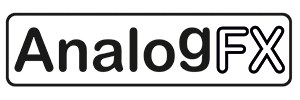Showing posts sorted by date for query Voltage Controlled. Sort by relevance Show all posts
Showing posts sorted by date for query Voltage Controlled. Sort by relevance Show all posts
Sunday, November 09, 2025
Tsunami v0.1 Voltage-Controlled Wave Folder test.
video upload by flightofharmony
"17 minutes of noodling with the almost-ready Tsunami.
two-stage wavefolder, with low and high breakpoints of each stage variable by potentiometers and collectively by a control voltage. Also with voltage-selectable inversion (invert/not invert)of input mix and voltage-selectable (limit/no limit) output limiting.
No editing, just raw upload."
Thursday, November 06, 2025
New SEOK Eurorack Modules - DRIPS, AT, M22, & ROTARIES
SEOK - DRIPS – Voltage Controlled Analog Filter [DEMO no talk]
video upload by SEOK synthesizers
via SEOK Eurorack Modules
DRIPS
A warm and bubbly 12 dB/oct analog Eurorack filter with dual voltage control of frequency. Low-pass, band-pass, and high-pass outputs in one compact 8 hp module.
With external signals, the filter stays soft, clean, and precise. Adding resonance gives a liquid acid tone (like a good filter coffee). When driven into self-oscillation, it produces sine waves perfect for deep bass, kicks, and percussive sounds.
An integrated VCA placed after the filter lets you shape both tone and dynamics in a single path – precise when clean, saturated and raw when pushed.
Raise the offset to move seamlessly from rhythmic sequences to heavy drones.
Background:
We wanted to build a versatile Eurorack VCF/VCA with a balanced function-to-HP ratio. For us, ergonomics are as important as function – it should feel intuitive and spacious around the core controls.
And since we’re from Sweden, we couldn’t resist adding a little warmth.
video upload by SEOK synthesizers
via SEOK Eurorack Modules
DRIPS
A warm and bubbly 12 dB/oct analog Eurorack filter with dual voltage control of frequency. Low-pass, band-pass, and high-pass outputs in one compact 8 hp module.
With external signals, the filter stays soft, clean, and precise. Adding resonance gives a liquid acid tone (like a good filter coffee). When driven into self-oscillation, it produces sine waves perfect for deep bass, kicks, and percussive sounds.
An integrated VCA placed after the filter lets you shape both tone and dynamics in a single path – precise when clean, saturated and raw when pushed.
Raise the offset to move seamlessly from rhythmic sequences to heavy drones.
Background:
We wanted to build a versatile Eurorack VCF/VCA with a balanced function-to-HP ratio. For us, ergonomics are as important as function – it should feel intuitive and spacious around the core controls.
And since we’re from Sweden, we couldn’t resist adding a little warmth.
Yamaha CS01 II Monophonic Synthesizer SN 2341
Note: links to listings are affiliate links for which the site may be compensated.
via this eBay listing
Pics of the inside below.

 "See video [in the listing while up] for working features. The feet switch works but you sometimes have to fiddle with it. I bought this in the late 1980’s so it is firsthand. I have kept it in a dry healthy environment. It was bought in Europe and I checked it in the US using a European plug and a proper power transformer. The internal loudspeaker doesn’t seem to work. In the video I connected it to an external speaker. Batteries didn’t seem to power up the synth. Not sure why, the connexions are clean. Maybe modern alkaline batteries are weaker than the older ones. This looks like a toy but is actually a very powerful and sought after synth.
"See video [in the listing while up] for working features. The feet switch works but you sometimes have to fiddle with it. I bought this in the late 1980’s so it is firsthand. I have kept it in a dry healthy environment. It was bought in Europe and I checked it in the US using a European plug and a proper power transformer. The internal loudspeaker doesn’t seem to work. In the video I connected it to an external speaker. Batteries didn’t seem to power up the synth. Not sure why, the connexions are clean. Maybe modern alkaline batteries are weaker than the older ones. This looks like a toy but is actually a very powerful and sought after synth.
TECHNICAL FEATURES
Improved filter: The CS01 II features a 24dB resonant low-pass filter with an adjustable slider for resonance, a significant upgrade from the 12dB filter with a simple on/off resonance switch on the original model.
Sound generation: It includes a voltage-controlled oscillator with selectable waveforms (triangle, saw, square), pulse width modulation, and a white noise option.
Envelopes and LFO: A single ADSR envelope generator controls both the amplifier and filter depth, and a basic LFO can modulate the VCO pitch or filter cutoff.
Portability: Designed for portability, it has a mini-keyboard, a built-in speaker, and can be powered by batteries.
Controls: It includes pitch and modulation wheels, a glissando (portamento) function, and an input for a breath controller.
The CS01 II is a monophonic synthesizer, meaning it can only play one note at a time.
Sound: It is highly regarded by electronic musicians today for its ability to produce "bubbly and growling" bass sounds and other fat analog tones.
Target audience: While its small size and simplicity made it a good beginner's synth when released, its excellent sound quality has made it a valuable instrument for experienced musicians."
via this eBay listing
Pics of the inside below.

 "See video [in the listing while up] for working features. The feet switch works but you sometimes have to fiddle with it. I bought this in the late 1980’s so it is firsthand. I have kept it in a dry healthy environment. It was bought in Europe and I checked it in the US using a European plug and a proper power transformer. The internal loudspeaker doesn’t seem to work. In the video I connected it to an external speaker. Batteries didn’t seem to power up the synth. Not sure why, the connexions are clean. Maybe modern alkaline batteries are weaker than the older ones. This looks like a toy but is actually a very powerful and sought after synth.
"See video [in the listing while up] for working features. The feet switch works but you sometimes have to fiddle with it. I bought this in the late 1980’s so it is firsthand. I have kept it in a dry healthy environment. It was bought in Europe and I checked it in the US using a European plug and a proper power transformer. The internal loudspeaker doesn’t seem to work. In the video I connected it to an external speaker. Batteries didn’t seem to power up the synth. Not sure why, the connexions are clean. Maybe modern alkaline batteries are weaker than the older ones. This looks like a toy but is actually a very powerful and sought after synth.TECHNICAL FEATURES
Improved filter: The CS01 II features a 24dB resonant low-pass filter with an adjustable slider for resonance, a significant upgrade from the 12dB filter with a simple on/off resonance switch on the original model.
Sound generation: It includes a voltage-controlled oscillator with selectable waveforms (triangle, saw, square), pulse width modulation, and a white noise option.
Envelopes and LFO: A single ADSR envelope generator controls both the amplifier and filter depth, and a basic LFO can modulate the VCO pitch or filter cutoff.
Portability: Designed for portability, it has a mini-keyboard, a built-in speaker, and can be powered by batteries.
Controls: It includes pitch and modulation wheels, a glissando (portamento) function, and an input for a breath controller.
The CS01 II is a monophonic synthesizer, meaning it can only play one note at a time.
Sound: It is highly regarded by electronic musicians today for its ability to produce "bubbly and growling" bass sounds and other fat analog tones.
Target audience: While its small size and simplicity made it a good beginner's synth when released, its excellent sound quality has made it a valuable instrument for experienced musicians."
Monday, November 03, 2025
Synthesizing with Moog | Lesson 4: Original Soundtrack
video upload by Moog Music
"The soundtrack from the fourth episode of Synthesizing with Moog invites you to dive deep into one of the synthesizers signature components, the Voltage-Controlled Filter. While different oscillator shapes could create a bed of tone and harmonics, the Voltage-Controlled Filter allowed musicians to sculpt a distinct sound out of all those harmonics and even shape that sound over time.
We hope you enjoy this music created by Moog electronic musical instrument experts Max Ravitz ( / patriciaaa ) and Gunnar Haslam ( @lasynthesehumaine6932 ).
0:00 - Giles Goes to the Movies / Gunnar Haslam
1:58 - Clare / Gunnar Haslam
11:52 - Thomas Elroy / Max Ravitz
15:06 - Broken Traces / Max Ravitz"
Synthesizing with Moog | Lesson 3: Original Soundtrack
video upload by Moog Music
"The soundtrack from the third episode of Synthesizing with Moog invites you to dive deep into 'Vibrations' and their the source on the synthesizer – the oscillator. We also dive into the topics of harmonics, looking at how the shape of oscillation creates distinct tones with different harmonic characteristics.
0:00 - Cosmicmantova / Gunnar Haslam
3:32 - Looking Through a Glass Table / Gunnar Haslam
9:12 - See Ess / Max Ravitz
13:04 - Enola / Max Ravitz
17:12 - Dusk on Karl Marx Strasse / Gunnar Haslam"
Synthesizing with Moog | Lessons
Thursday, October 30, 2025
R.A. Moog Modular IIIC, 1968
Note: links to listings are affiliate links for which the site may be compensated.
via this Vemia listing
Click the auction link on top when you get there for additional listings.
This appears to be the one previously featured here with additinal pics.
via this Vemia listing
Click the auction link on top when you get there for additional listings.
This appears to be the one previously featured here with additinal pics.
Wednesday, October 29, 2025
10/29/25 ARP 1613 + Metasonix R-54 53 52 51 56 + Zerosum ZI61 & VCA + MFB ADSR + OAM + MIDIVERB (…)
video upload by Cfpp0
"10/29/25 ARP 1613 + Metasonix R-54 & 56 & 53 & 52 & 51 + Zerosum Inertia ZI61 & Voltage Controlled Annihilation + MFB ADSR + OAM Time Machine + Alesis MIDIVERB 2
The ARP 1613 sequencer output A controls the Metasonix R-52 sweep CV in, which creates the high resonant rasp on the reversed quarter notes. The R-52 runs into the R-53, which adds the pitch to the R-52 rasp, then through the R-51, controlled by the MFB dual ADSR, gated by the ARP 1613 gate bus 3. This signal goes through the R-56 for more distortion and spring reverb—panned center on the Mackie Onyx 1640, with stereo room reverb from the Alesis MIDIVERB II. Meanwhile, the more mechanical-sounding squawk/chirp/scream loop is the ARP 1613 quantized output B controlling the pitch of the R-54, which runs through the Zerosum Inertia Voltage Controlled Annihilation, which runs through the Zerosum ZI61, high is controlled by the MFB dual ADSR, gated by the ARP 1613 gate bus 3. The ZI61 is panned left on the Mackie, but it also feeds the OAM Time Machine delay, which is panned center on the Mackie.
NTS:
USCIS, windowless"
Synthesizing with Moog | Lesson 4: Resonance
video upload by Moog Music
"In 1964 the modular synthesizer was born, and one of its signature components was the Voltage-Controlled Filter. While different oscillator shapes could create a bed of tone and harmonics, the Voltage-Controlled Filter allowed musicians to sculpt a distinct sound out of all those harmonics and even shape that sound over time. A key component in synthesizing existing sounds, the Voltage-Controlled Filter was also capable of creating sounds no one had ever heard before, giving birth to whole new genres of music and defining the sound of electronic music to this day."
You can find additional Synthesizing with Moog | Lesson posts here.
Thursday, October 23, 2025
New CLUB OF THE KNOBS Modules For a Colourful Winter Time
This one was sent my way via John L Rice, via CLUB OF THE KNOBS.
"For a colourful winter time:
CP19 FOUR VOICE MIDI ADAPTER
C921P VOLTAGE CONTROLLED DUAL OSCILLATOR
p.s.
Also NEW in 2025 [not pictured, but mentioned in Dec 2024]
NEW! 2025
NEW! CP18 CHROMATIC TUNER
NEW! C929 VOX HUMANA (in addition to C1610 RESONATORS/FIXED MODIFIERS)"
http://www.cluboftheknobs.com
Morphor ECHON 6 BBD Resonator Synth Now Open for Pre-Orders



Morphor's ECHON 6 pre-orders are now open at Perfect Circuit
Press release follows:
Morphor marks upcoming availability of ECHON 6 as world’s first polysynth based around analogue BBD resonators by announcing opening of pre-orders
GHENT, BELGIUM: having twice turned heads and opened ears thanks to show-stealing showcases at SUPERBOOTH25, May 8-10, FEZ-Berlin, Germany and Machina Bristronica 2025, September 27-28, Bristol, UK, Morphor marks upcoming availability of its eagerly-awaited ECHON 6 — being billed as the world’s first polyphonic synthesizer based around BBD (Bucket-Brigade Delay) resonators, building upon the Belgium-based collective of artists, engineers, and musicians with a passion for creative sound experience and radical acoustic ideas’ illustrious Eurorack expertise in that area as its inaugural standalone (rack-mountable) desktop design — by announcing the opening of pre-orders as of October 23…
As an ANALOGUE POLYPHONIC MULTI-TIMBRAL BBD SYNTHESIZER — helpfully highlighted by the on point wording worked tastefully into its fitting front panel design’s execution, ECHON 6 brings the principals of modal synthesis into the analogue domain. Far from reimagining a digital concept with modern analogue circuitry, it readily redefines how resonance and excitation can interact. And as the world’s first polyphonic synthesizer based around BBD resonators, no less, each of its six voices features a discrete BBD RESONATOR that tracks the keyboard, producing organic overtones and complex harmonic depth. Duly allowing its users to excite those resonators in creative ways, ECHON 6 can generate anything from plucked and bowed strings over leads and basses to big pads and evolving soundscapes. Combining comprehensive multi-timbral capabilities, a 9 x 32 modulation matrix, a full analogue signal path, and a one-knob-per-function approach, ECHON 6 ultimately unites experimental sound design with classic polyphony. Indeed, its architecture invites exploration at every stage of that analogue signal path.
Wednesday, October 22, 2025
The Florian Schneider Collection to Be Auctioned at JULIEN*S November 19
Note: links to listings are affiliate links for which the site may be compensated.
via JULIEN*S
"THE FLORIAN SCHNEIDER COLLECTION
Auction to be held at Musician's Hall of Fame & Museum, Nashville, on November 19
An incredible collection of more than 450 artifacts from the life and career of Florian Schneider, co-founder of the pioneer electronic band Kraftwerk."
Pics and videos featuring some of the gear below, and his Lederhosen for good measure (thanks greg!).
Update: the post has been fully updated with all the synth related gear. This may just well be the longest post to be featured on the site. I wanted to capture all the pics for all of the details including notes, scuffs, and of course serial numbers. It's an interesting look into what he used, the condition he keped his gear, in some cases, how he actually used his gear. Note the phonetics on the keys of the Casio CZ-101 and DX-100. Note the Midi Switch Box with a built-in speaker? What's that about? Note the camouflage key strap on the Korg RK-100 Remote Keyboard. Did he pick it out himself or did the keytar just come with it? Note the repeat midi controllers and the MIDI saxaphones. Wind was his primary instrument. You'll find a ton of the acoustic gear he used in the other listings. This is a fascinating insight into both what and how he used his gear.
Side note: there is no affiliate compensation for this post. The note at the top automatically shows for all posts with the Auction label.


Rack Mount Sennheiser VSM-201 Vocoder
Starting Bid $5,000
Estimate $20,000 - $40,000 USD
A late 1970s Sennheiser VSM 201 Vocoder with no serial number from the personal studio and collection of Florian Schneider of Kraftwerk (see images). While it’s said that only a few dozen of these Vocoders were produced, a few examples made it into the hands of forward-thinking musical artists including Herbie Hancock, Daft Punk, and of course, Kraftwerk, who used a VSM-201 like this on their albums Man Machine (1978) and Computerworld (1981). The VSM-201 has an intelligible sound that has not yet been bested by modern gear. Includes power cable. This VSM-201 has been removed from its wooden enclosure (which bears the serial number plate) and modified with a metal rack mount casing, presumably for live use. Requires 240v, IEC power cable not included.
Dimensions: 19 x 9 x 9 inches
Category: Kraftwerk, Equipment
Provenance: PROVENANCE From the Estate of Florian Schneider
via JULIEN*S
"THE FLORIAN SCHNEIDER COLLECTION
Auction to be held at Musician's Hall of Fame & Museum, Nashville, on November 19
An incredible collection of more than 450 artifacts from the life and career of Florian Schneider, co-founder of the pioneer electronic band Kraftwerk."
Pics and videos featuring some of the gear below, and his Lederhosen for good measure (thanks greg!).
Update: the post has been fully updated with all the synth related gear. This may just well be the longest post to be featured on the site. I wanted to capture all the pics for all of the details including notes, scuffs, and of course serial numbers. It's an interesting look into what he used, the condition he keped his gear, in some cases, how he actually used his gear. Note the phonetics on the keys of the Casio CZ-101 and DX-100. Note the Midi Switch Box with a built-in speaker? What's that about? Note the camouflage key strap on the Korg RK-100 Remote Keyboard. Did he pick it out himself or did the keytar just come with it? Note the repeat midi controllers and the MIDI saxaphones. Wind was his primary instrument. You'll find a ton of the acoustic gear he used in the other listings. This is a fascinating insight into both what and how he used his gear.
Side note: there is no affiliate compensation for this post. The note at the top automatically shows for all posts with the Auction label.


Rack Mount Sennheiser VSM-201 Vocoder
Starting Bid $5,000
Estimate $20,000 - $40,000 USD
A late 1970s Sennheiser VSM 201 Vocoder with no serial number from the personal studio and collection of Florian Schneider of Kraftwerk (see images). While it’s said that only a few dozen of these Vocoders were produced, a few examples made it into the hands of forward-thinking musical artists including Herbie Hancock, Daft Punk, and of course, Kraftwerk, who used a VSM-201 like this on their albums Man Machine (1978) and Computerworld (1981). The VSM-201 has an intelligible sound that has not yet been bested by modern gear. Includes power cable. This VSM-201 has been removed from its wooden enclosure (which bears the serial number plate) and modified with a metal rack mount casing, presumably for live use. Requires 240v, IEC power cable not included.
Dimensions: 19 x 9 x 9 inches
Category: Kraftwerk, Equipment
Provenance: PROVENANCE From the Estate of Florian Schneider
LABELS/MORE:
ARP,
Auctions,
Casio,
Doepfer,
Dynacord,
EMS,
exclusive,
exclusive2025,
Future Retro,
Korg,
MOOG,
News,
oscilloscopes,
RHEEM,
Roland,
Sennheiser,
SOVIET,
synth humor,
Updates,
Yamaha
Tuesday, October 21, 2025
Xaoc Devices Introduces Zlin 1982 Crossfader
video upload by Xaoc Devices
"Please welcome a new member of the Xaoc Devices Eurorack modules family. Zlin [zlin] is a small utility module (only 3HP!) that can act as an audio signal and CV cross-fader, a linear VCA with drone control, a ducking VCA, or a feedback controller. It is a tool perfect for any modular environment - a missing piece of the puzzle greatly enhancing the creative potential of any system. Use it to construct unusual waveforms, simulate classic subtractive-style dynamic timbre shaping without the need for any filters, or simply morph between rich signals.
As Zlin is DC-coupled and built around a modern high-quality dual VCA chip, it delivers a wide dynamic range with low noise and distortion. A slider potentiometer with an illuminated LED provides visual feedback of the module’s state. An auxiliary jack with three selectable functions adds further flexibility for creative patching.
Main features:
width 3HP
depth 32mm (including cable bracket)
+25mA/-15mA
voltage and manually controlled cross-fader
linear, DC-coupled VCA with drone and duck functions
feedback controller
visual indication of mix ratio
AUX jack for patching tricks
PRICE: 100 EUR MSRP, available now!"
Check with dealers on the right for availability.
Monday, October 20, 2025
AD ENVELOPE + VCA WITH A BITE | ADDAC System - ADDAC816 Percussion VCA
video upload by DANIELE
"The ADDAC816 Percussion VCA by ADDAC System is a voltage controlled amplifier featuring an integrated AD envelope with a fast attack and adjustable decay, perfect for creating precise and dynamic percussive sounds!"
0:00 Intro
0:24 Envelope gain
1:08 Decay knob and time switch
2:05 Envelope input behavior
2:33 VCA input
2:46 Patch 1
4:02 Patch 2
5:05 Patch 3
"While deep in its soul there’s a standard VCA with exponential response that can be used as such, in its heart pulses an AD envelope with a sharp attack and a variable decay internally connected to the VCA control input. When it opens its mouth it can whisper in your ear but don’t let this soft demeanor fool you, if driven to the extreme it will show its teeth and gnarly bite and chew on your cochleas with all its might.
The AD envelope has a fixed short Attack, just enough to avoid the typical “click” that happens when using a Gate signal to control a VCA, while the envelope Decay can be controlled via its knob or voltage controlled using the CV input and attenuverter.
We named it Percussion VCA as most percussion intruments have sharp attacks with variable decays just as its AD Envelope however it can be used for any purpose where a VCA is needed including for CV signals due to it’s DC coupled signal path.
Furthermore it also allows to be driven from a simple Gate signal while controlling its decay. This way it’s easy to plug a noise source, vco or any audio and turn that source into a percussive element."
Check with dealers on the right for availability.
Sunday, October 19, 2025
Yamaha CS30 SN 4145
Note: links to listings are affiliate links for which the site may be compensated.
via this Vemia listing
Click the auction link on top when you get there for additional listings.
Pic of the inside.


 "Released in 1977, the Yamaha CS30 is the flagship of their CS Monophonic range. It is as close to a modular synthesiser that Yamaha ever made and its modulation and routing options are extensive.
"Released in 1977, the Yamaha CS30 is the flagship of their CS Monophonic range. It is as close to a modular synthesiser that Yamaha ever made and its modulation and routing options are extensive.
This one plays and sounds great. The synthesiser responds to all the pots and sliders as it should and it's ready to use and create weird and wonderful noises and textures. However, to get it to 100 percent functionality the synth requires a service to fix a few issues. Neither the combined 1+2 audio jack nor headphone output work, though the individual 1 and 2 jacks are fine. The sequencer works when switched to Manual and steps through by pushing the red button. However, the 'Clock' function only works when the synth has been powered on for a while and has 'warmed-up'.
Cosmetically the synth is in pretty good shape with nothing broken or missing. There are lots of very small dots of blistered paint, some with a hint of surface rust. The most noticeable ones are at the top of the control panel but these have not increased in size or number over the past decade-or-so. They don't look too bad, in my opinion. Inside is clean and dry with no signs of damp. One of the C keys has a cigarette burn (WHY??!!!) which has melted the plastic slightly. However, all keys are secure and function correctly. The case has a few marks here and there, but overall it looks good.
The case was designed to make servicing very easy. The front control panel is hinged at the back and can be opened by removing just two screws from each side panel. This then reveals a very neat collection of boards and wiring.
The CS30 can be easily integrated into a modern MIDI studio setup. By using an appropriate converter you can interface various features of the synthesiser via its numerous control inputs and outputs:
Foot Controller (CV) for volume in.
Sequencer CV and Trigger (gate) out.
Key Voltage (pitch CV) in and out.
Trigger (gate) in and out.
External (audio to the filter) in.
It features two voltage controlled oscillators (VCOs), two voltage controlled filters (VCFs - both featuring low-pass, band-pass and high-pass options), two voltage controlled amplifiers (VCAs) and three envelope generators. It also sports a ring modulator and a voltage controlled low-frequency oscillator (LFO).
It is fairly unusual for a hard-wired synthesizer in that it features a variety of switches which allow the user to re-route the signal flow from the usual VCO-VCF-VCA convention. For example, VCO 1 can output a square wave through VCF 1 whilst also outputting a high-pass filtered sawtooth wave through VCO 2. Another example is that the envelope generators can be assigned to any of the VCO, VCF and VCA modules and can also be inverted. Because the LFO is voltage controlled, the oscillating speed can be governed by an envelope generator and different waveforms can be applied to the other modules all at the same time. The CS30 also features an external signal input for filtering other musical instruments and audio sources, which can also be used as a modulation source. It includes an onboard eight-step analogue sequencer."
via this Vemia listing
Click the auction link on top when you get there for additional listings.
Pic of the inside.


 "Released in 1977, the Yamaha CS30 is the flagship of their CS Monophonic range. It is as close to a modular synthesiser that Yamaha ever made and its modulation and routing options are extensive.
"Released in 1977, the Yamaha CS30 is the flagship of their CS Monophonic range. It is as close to a modular synthesiser that Yamaha ever made and its modulation and routing options are extensive.This one plays and sounds great. The synthesiser responds to all the pots and sliders as it should and it's ready to use and create weird and wonderful noises and textures. However, to get it to 100 percent functionality the synth requires a service to fix a few issues. Neither the combined 1+2 audio jack nor headphone output work, though the individual 1 and 2 jacks are fine. The sequencer works when switched to Manual and steps through by pushing the red button. However, the 'Clock' function only works when the synth has been powered on for a while and has 'warmed-up'.
Cosmetically the synth is in pretty good shape with nothing broken or missing. There are lots of very small dots of blistered paint, some with a hint of surface rust. The most noticeable ones are at the top of the control panel but these have not increased in size or number over the past decade-or-so. They don't look too bad, in my opinion. Inside is clean and dry with no signs of damp. One of the C keys has a cigarette burn (WHY??!!!) which has melted the plastic slightly. However, all keys are secure and function correctly. The case has a few marks here and there, but overall it looks good.
The case was designed to make servicing very easy. The front control panel is hinged at the back and can be opened by removing just two screws from each side panel. This then reveals a very neat collection of boards and wiring.
The CS30 can be easily integrated into a modern MIDI studio setup. By using an appropriate converter you can interface various features of the synthesiser via its numerous control inputs and outputs:
Foot Controller (CV) for volume in.
Sequencer CV and Trigger (gate) out.
Key Voltage (pitch CV) in and out.
Trigger (gate) in and out.
External (audio to the filter) in.
It features two voltage controlled oscillators (VCOs), two voltage controlled filters (VCFs - both featuring low-pass, band-pass and high-pass options), two voltage controlled amplifiers (VCAs) and three envelope generators. It also sports a ring modulator and a voltage controlled low-frequency oscillator (LFO).
It is fairly unusual for a hard-wired synthesizer in that it features a variety of switches which allow the user to re-route the signal flow from the usual VCO-VCF-VCA convention. For example, VCO 1 can output a square wave through VCF 1 whilst also outputting a high-pass filtered sawtooth wave through VCO 2. Another example is that the envelope generators can be assigned to any of the VCO, VCF and VCA modules and can also be inverted. Because the LFO is voltage controlled, the oscillating speed can be governed by an envelope generator and different waveforms can be applied to the other modules all at the same time. The CS30 also features an external signal input for filtering other musical instruments and audio sources, which can also be used as a modulation source. It includes an onboard eight-step analogue sequencer."
Thursday, October 16, 2025
Hans Zimmer Next Level Giorgio III Monumental 5U Modular System
Hans Zimmer 2025 - Batman Dark Knight - Opening - Cologne / Köln - Next Level Live
video upload by C3|Nik
Pics and details below. First the video description:
"Some thoughts regarding the "Hans Zimmer - The Next Level" concert:
Amazing! Amazing! AMAZING!
I went to all shows of Hans Zimmer, some I've seen even multiple times. The sound quality of "Next Level" blew them all out of the water. It was louder, it was more intense, really top notch sound engineering. That part at 5:50 in the video was extremely intense, I have never experienced that kind of bass before. I sat close to the front, there was a line of subwoofers right in front of me, I would not be surprised if that part causes some anxiety for people, that's how intense it was.
Some pieces were re-arranged which was an interesting touch, it added a nice new dimension to it.
I can recommend it. It is expensive but a one-of-a-kind experience in my opinion."
Update: SynTesla video below added.
GIORGIO III, Hans Zimmer's monumental synthesiser manufactured by SynTesla
video upload by SynTesla
"SynTesla is the manufacturer of the gigantic GIORGIO III modular synthesiser commissioned by Hans Zimmer for his world tour 'Hans Zimmer Live The Next Level'. Discover the unboxing and assembly of this fabulous instrument."




This one is in via John L Rice.
via pidjyman on Mod Wiggler:
"The Giorgio III is a monumental 5U Modular synthesiser created by SynTesla (Pierre-Jean Tardiveau, aka pidjyman on MW) for composer Hans Zimmer for his world tour.
This synthesizer is undoubtedly the largest modular synth in the world, consisting of 12 cabinets measuring 5 x 5U + 1 x 3U in height. Only 10 cabinets are installed on stage, with two others serving as back-up behind the scenes.
This monster represents 10 months of hard work in total. 23 types of modules were designed and produced in large numbers. To give you an example, the synth is composed of 3 separate units of 4 voices each, for a total of 12 voices, with 2 VCOs, 2 DCOS, 2 filters, 6 DADSRs, 6 VCAs, 1 resonator, 4 LFOs, buffered multis, logic, attenuators, attenuverter, mixers, wavefolders, gate delays, summing mixers, etc. etc...
The modules were manufactured in France by Syntesla and designed by Yusynth and SynTesla. They were assembled in Los Angeles at Hans Zimmer's studios and then shipped to Germany for final assembly on the tour stage.
When the synth arrived in Oberhausen, Hans Zimmer had never seen it before (he was rehearsing in London while it was being assembled in LA), and I can promise you that his smile in the photo is not fake (neither is mine).
The electrical part of the cabinets was also designed and built by SynTesla. It includes an oversized power supply with a capacity of 10 amps, an active filter that provides perfectly stable and clean voltage, and a power distribution board in SynTesla and DotCom format, as well as an integrated voltmeter and ammeter. The whole system has several levels of safety.
This made it possible to connect each cabinet to a solid-state relay socket controlled by DMX from the lighting console. The robustness of the device allows the whole or part of the system to be switched on and off in sequence, depending on the pieces being played on stage."
video upload by C3|Nik
Pics and details below. First the video description:
"Some thoughts regarding the "Hans Zimmer - The Next Level" concert:
Amazing! Amazing! AMAZING!
I went to all shows of Hans Zimmer, some I've seen even multiple times. The sound quality of "Next Level" blew them all out of the water. It was louder, it was more intense, really top notch sound engineering. That part at 5:50 in the video was extremely intense, I have never experienced that kind of bass before. I sat close to the front, there was a line of subwoofers right in front of me, I would not be surprised if that part causes some anxiety for people, that's how intense it was.
Some pieces were re-arranged which was an interesting touch, it added a nice new dimension to it.
I can recommend it. It is expensive but a one-of-a-kind experience in my opinion."
Update: SynTesla video below added.
GIORGIO III, Hans Zimmer's monumental synthesiser manufactured by SynTesla
video upload by SynTesla
"SynTesla is the manufacturer of the gigantic GIORGIO III modular synthesiser commissioned by Hans Zimmer for his world tour 'Hans Zimmer Live The Next Level'. Discover the unboxing and assembly of this fabulous instrument."




This one is in via John L Rice.
via pidjyman on Mod Wiggler:
"The Giorgio III is a monumental 5U Modular synthesiser created by SynTesla (Pierre-Jean Tardiveau, aka pidjyman on MW) for composer Hans Zimmer for his world tour.
This synthesizer is undoubtedly the largest modular synth in the world, consisting of 12 cabinets measuring 5 x 5U + 1 x 3U in height. Only 10 cabinets are installed on stage, with two others serving as back-up behind the scenes.
This monster represents 10 months of hard work in total. 23 types of modules were designed and produced in large numbers. To give you an example, the synth is composed of 3 separate units of 4 voices each, for a total of 12 voices, with 2 VCOs, 2 DCOS, 2 filters, 6 DADSRs, 6 VCAs, 1 resonator, 4 LFOs, buffered multis, logic, attenuators, attenuverter, mixers, wavefolders, gate delays, summing mixers, etc. etc...
The modules were manufactured in France by Syntesla and designed by Yusynth and SynTesla. They were assembled in Los Angeles at Hans Zimmer's studios and then shipped to Germany for final assembly on the tour stage.
When the synth arrived in Oberhausen, Hans Zimmer had never seen it before (he was rehearsing in London while it was being assembled in LA), and I can promise you that his smile in the photo is not fake (neither is mine).
The electrical part of the cabinets was also designed and built by SynTesla. It includes an oversized power supply with a capacity of 10 amps, an active filter that provides perfectly stable and clean voltage, and a power distribution board in SynTesla and DotCom format, as well as an integrated voltmeter and ammeter. The whole system has several levels of safety.
This made it possible to connect each cabinet to a solid-state relay socket controlled by DMX from the lighting console. The robustness of the device allows the whole or part of the system to be switched on and off in sequence, depending on the pieces being played on stage."
Wednesday, October 15, 2025
Synthesizing with Moog | Lesson 2: Dynamics
video upload by Moog Music
Synthesizing with Moog
"In the second episode of Synthesizing with Moog we dive deep into this question to understand how a synthesizer creates individual notes and how you can articulate them. We look at circuits like the Voltage-Controlled Amplifier and Envelope Generator and explore further dimensions of expression. What makes an instrument an instrument? Is it in the tactile control you have as you play the instrument and the ways you can articulate its sound?
Written, hosted, filmed, and produced by our team of electronic musical instrument experts, this new seven-part educational video series makes learning the fundamentals of synthesis accessible, engaging, and inspiring for anyone curious about science, music, and how the two worlds converge. We set out to create a series that brings you as much technical knowledge as it does entertainment and joy as you watch each episode!
We invite you to follow along with us at home with a printable worksheet corresponding to the contents of each weekly episode. https://inmusic.to/bdhnff3m
Creator, writer, and host: Chris Miller
Director and editor: Paul Shaver
Producers: Max Ravitz and Chris Miller
Director of Photography: Paul Shaver
Music: Max Ravitz and Gunnar Haslam
Graphics and Animations: Ryan Ford
Special thanks to Ana Rome
Filmed on location at Schneidersladen Apotheke, Berlin"
Wednesday, October 01, 2025
Make Noise Introduces PoliMATHS and QXG
video upload by MAKEN0ISE
Check with dealers on the right for availability. User video by Cinematic Laboratory further below.
PoliMATHS [MSRP: $459] is an eight-channel CV and Audio event generator for the New Universal Synthesizer System or any Eurorack modular synthesizer. It uses a single set of controls to generate complex functions at eight independent channel outputs. PoliMATHS’ functions are made up of two components: first, the well-known Rise-Fall envelope with variable Curve (familiar from the original MATHS and Function and 0-Coast Slope); and second, a variable-Shape Oscillation whose amplitude is controlled over time by the Rise-Fall envelopes. This oscillation can be either low frequency for the creation of complex control functions, or audio frequency for native generation of audio events/notes with optional tuned pitch control via 1v/oct control voltage. PoliMATHS also includes output headers for creating pre-patched connections to the control inputs of QXG.
PoliMATHS
Part of the New Universal Synthesizer System
Eight channel function generator with a single set of controls
Create simple or complex functions
Activate channels in many possible patterns using Channel Index, Round, and Parallel Modes
Modulate parameters across channels with Spread or Modulation Dissemination
Designed to work with MultiMod and QXG and future NUSS modules
Chain to QXG for immediate eight channel amplitude control


The Quad Stereo Gate (QXG) [MSRP: $239] music synthesizer module is a Four Channel Stereo Low Pass Gate and Mixer. Like the DXG before it, the QXG utilizes a new low pass gate circuit that does not use vactrols. This circuit is 100% analog and its response was arrived at after many months tailoring it to meet or exceed the expectations that have been set by all the vactrol low pass gates that Make Noise has created over the years. Additionally the QXG adds a Vactrol button to select between a Slow, low-pass-gate-like response emulating the decay time of a vactrol (Vactrol button ON), and a Fast precision response that still maintains the gentle filtering characteristic (Vactrol button OFF). Fast response can be especially useful when patching QXG with complex and quickly-changing functions such as those generated by PoliMATHS with the OSC circuit in use. The QXG also includes a Stereo Sum Output with voltage controllable Stereo Spread to quickly route all four channels across the stereo field. Each channel also has an individual output that removes the channel from the Sum when patched. In addition, QXG includes signal and control input headers for creating pre-patched connections from the outputs of PoliMATHS and MultiMod.
Part of the New Universal Synthesizer System
Four channel low pass gate
Vactrol-free design for classic Low Pass Gate sounds
Vactrol button to select Fast or Slow response
Xpread parameter for spreading the four channels across the stereo field
Summing stage with Stereo AUXiliary IN allows for chaining of multiple units, creating larger mixes
Individual channels can be removed from Sum by patching to their respective outputs
Designed to work with MultiMod and PoliMaths
Chain two QXG units to a PoliMaths for immediate eight channel amplitude control
PoliMaths & QXG | How does it sound when you know nothing?
video upload by Cinematic Laboratory
"Today MakeNoise has introduced PoliMaths and QXG. My dealer already had them in stock (!) and allowed me to buy them - under the strict condition to keep it a secret until after the official launch video. So I had the opportunity to make a video in one day, without access to any help from the manual or the MakeNoise launch video. Normally I'd do my homework first, but this opportunity is rare. Usually, I can intuitively figure out how a module works, but with PoliMaths, almost nothing is familiar, and what's familiar works differently. So I've probably been using a MonoMaths, but since I decided to get two, there's still a Poli vibe to it.
This is probably one of the worst videos I've made so far, but it's fun to patch in the blind with zero knowledge, and this was the only day I could record, edit and post it. So forgive me for being a MakeNoise groupie. I am biased, but I also think it's for a good reason. MakeNoise managed to make something extremely innovative. I'll make a proper video soon, and I'll figure out what to do with this one later."
Tuesday, September 30, 2025
9/29/25 MFB dual LFO + Metasonix R-51 52 53 54 + Zerosum Inertia ZI61 & VCA + (in description)
video upload by Cfpp0
Almost sounds orchestral.
"9/29/25 MFB dual LFO + Metasonix R-51 & R-52 & R-53 & R-54 + Zerosum Inertia ZI61 & Voltage Controlled Annihilation + Gieskes Fan VCO + OAM Time Machine + Alesis MIDIVERB II + Paia 6740 + CXM 1978
Keanoop on a Kawasaki KLR 600 in the Hsuehshan Tunnel."
Saturday, September 27, 2025
Wednesday, September 24, 2025
Lyle visits the Lost Ant Cafe
video upload by suitandtieguy
"Monday night I went to a very tiny bar in Lostant IL called the Lost Ant Cafe for fried chicken because the third shift clerk at the Tonica Casey's had a long conversation with Squiche and I about a bunch of stuff on the way back from Knobcon and I asked her what local fried chicken she liked. This was the only place I can remember from the conversation, and it's about a quarter mile down the road from a legendary upper Illinois River valley supper club called The Bull's Head which has been closed for too long. If you don't understand the relationship with the upper Illinois River valley, Italian supper clubs, and fried chicken then I don't know what to say other than you need to touch grass.
I came back to the studio and did this with Lyle. I think it demonstrates how absolutely fried this thing can sound. EBM guys are gonna want to save their pennies for the heaviest (by weight) bass machine they've ever played.
There is a modest amount of distortion on this example, in addition to slow LFOs from each voice controlled by each voice's auxiliary VCAs whose level is set by the Active Attenuators generating a simple voltage offset (something it does if you plug nothing into it) then multiplied to all four voices with the Active Multiples. These LFOs are fed into the second control input of the Vanilla Filters.
Each voice is panned across the soundfield with the output mixer.
In this example I only tweak the gate time on Continuo, global filter frequency and envelope amount, and the amount of the LFO to the filters from the Active Attenuators on the right side of the synthesizer.
As usual with Lyle videos, no effects or mastering at all, simply normalised.
Audio Verité, just like The Drive To 1981. I think it sounds great."
Thursday, September 18, 2025
BE A BETTER MODULATOR // Understanding Eurorack Modulation with the Thonk TRIPLE MOD
video upload by DivKid
"In this video we’ll break down how common types of modulation for sound synthesis work, how to make the most of them creatively and musically. We’ll do so while demoing the new Triple Mod DIY module from Thonk. Whether it’s creating multi-phonic layered patches needed multiple envelopes, understanding how a Turing Machine works and performing with it, understanding and making Sample & Hold melodic, creating chain reactions with EOC ‘end of cycle’ triggers … there’s lots in this video applicable to LOTS of other modules."
NEXT PAGE
HOME
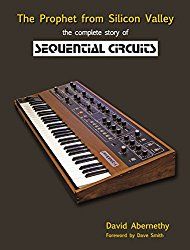
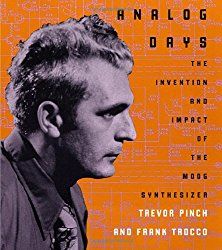
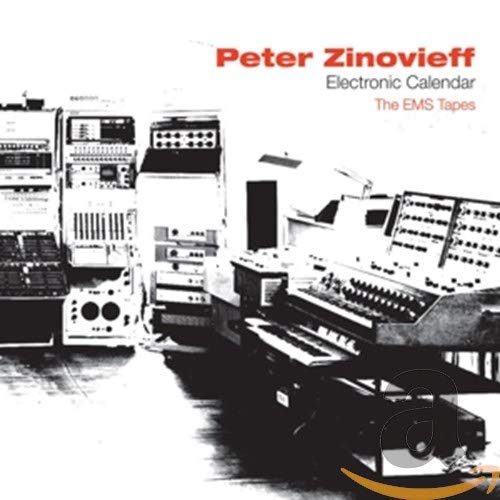
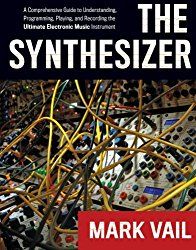
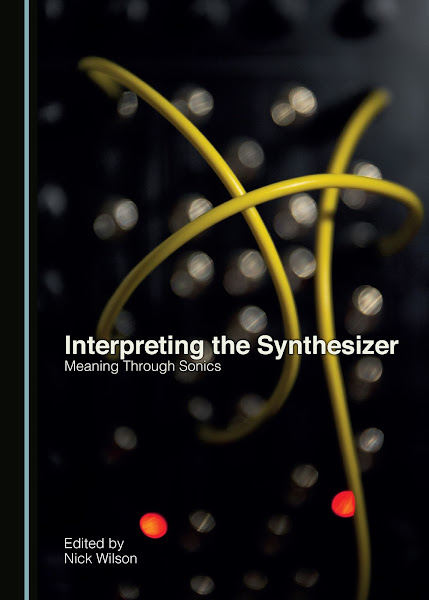
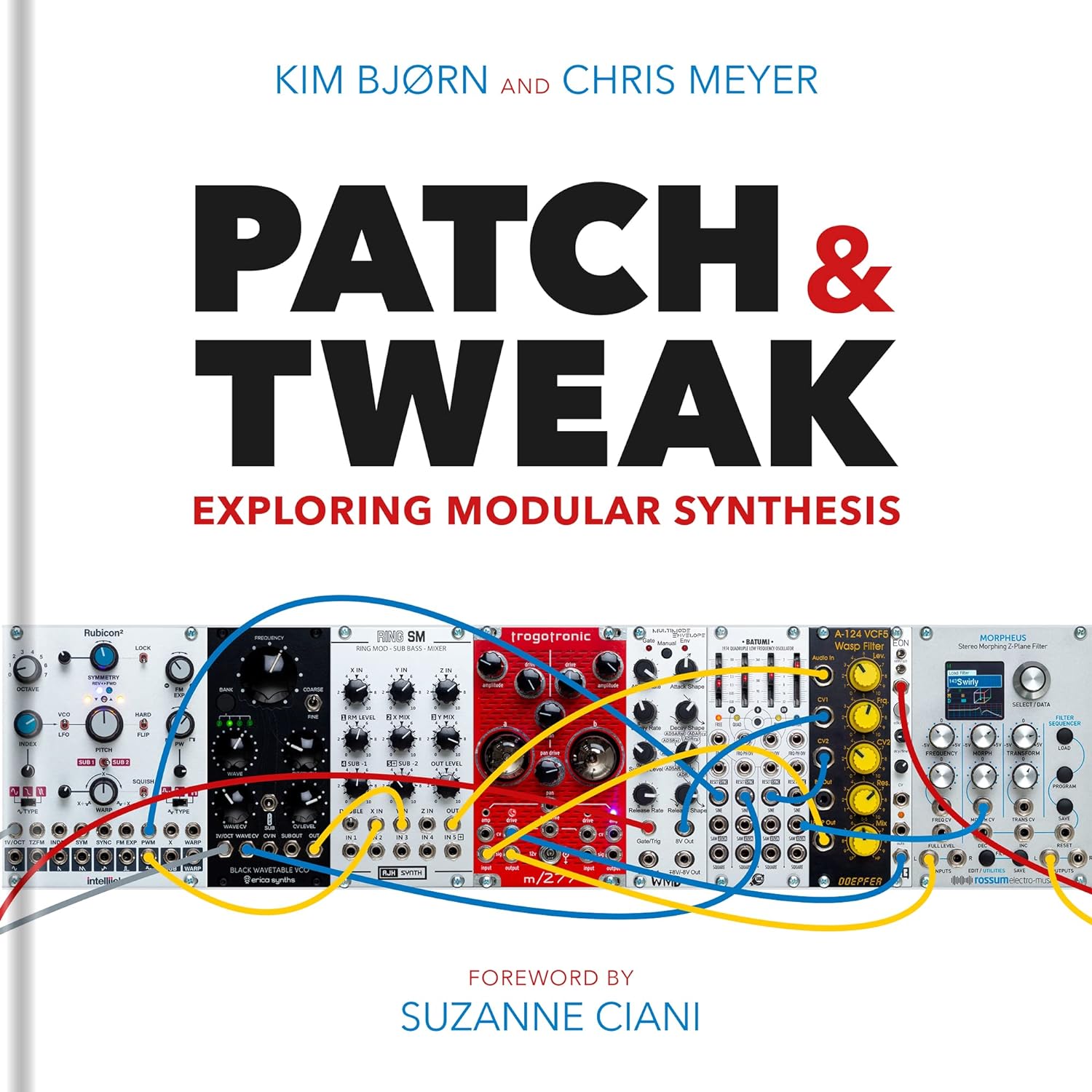

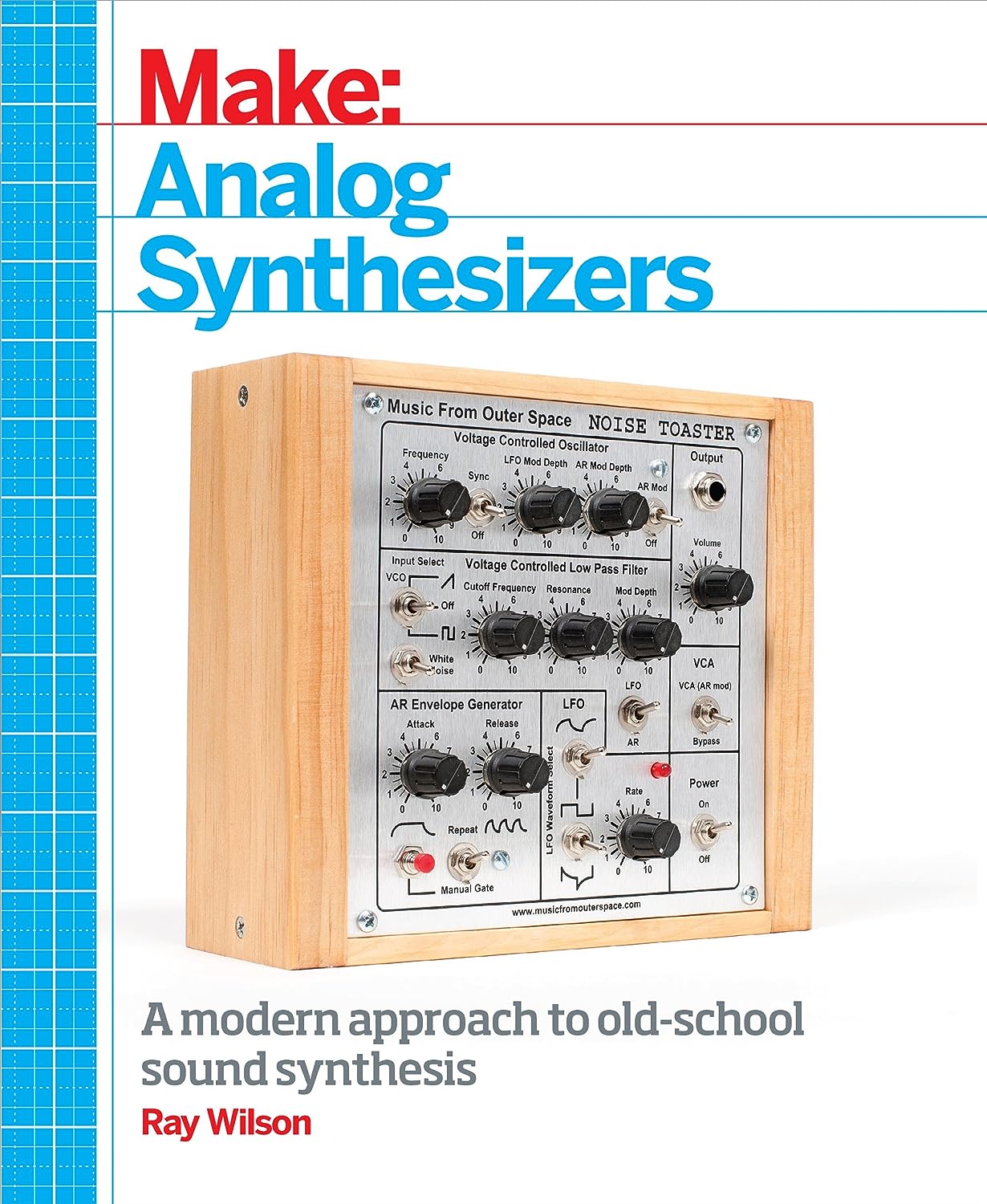
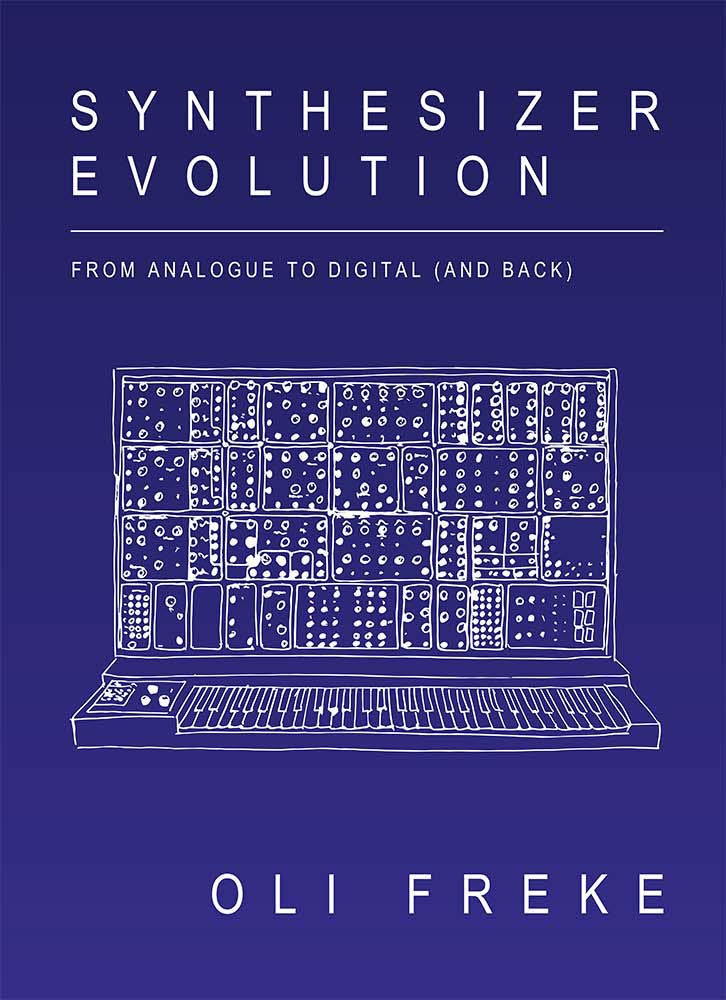
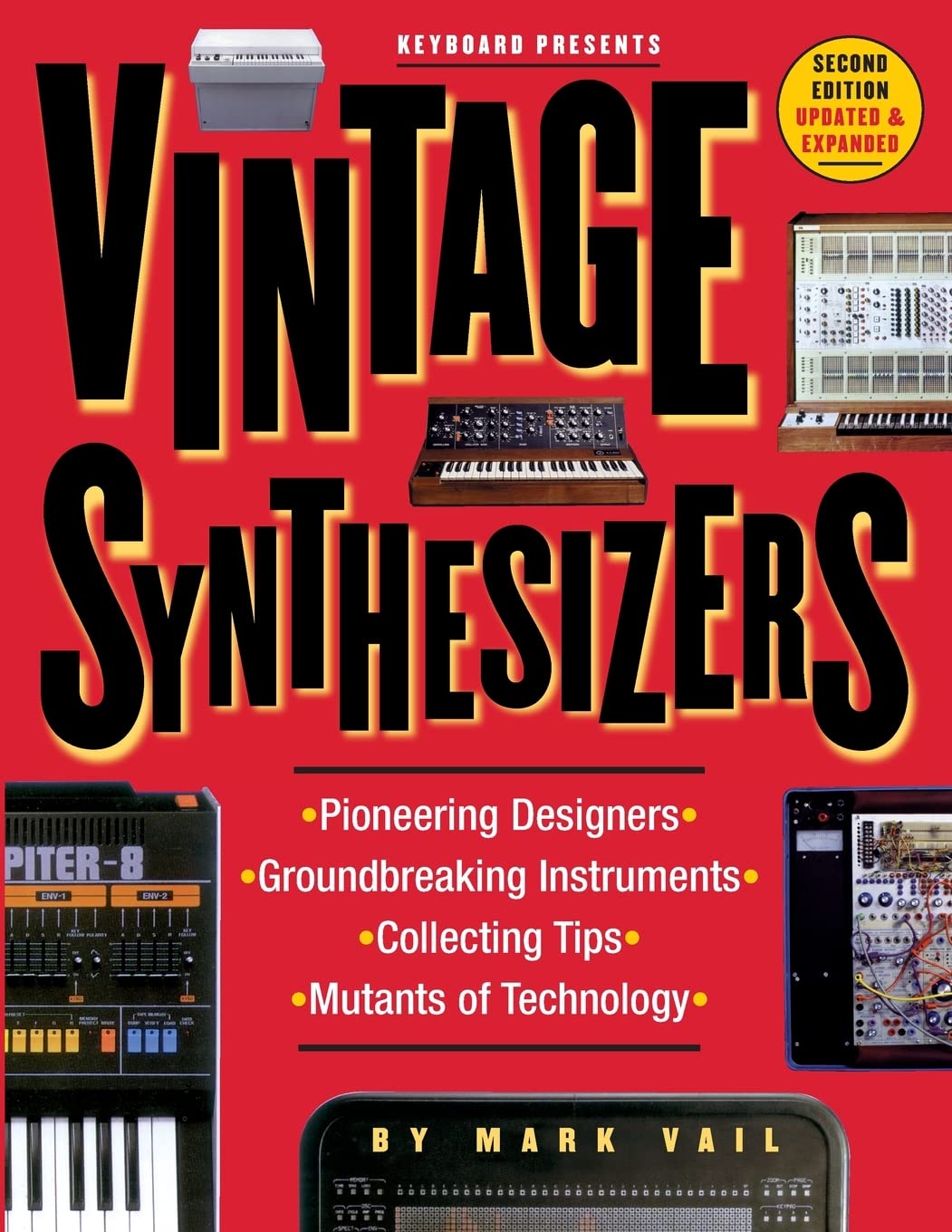
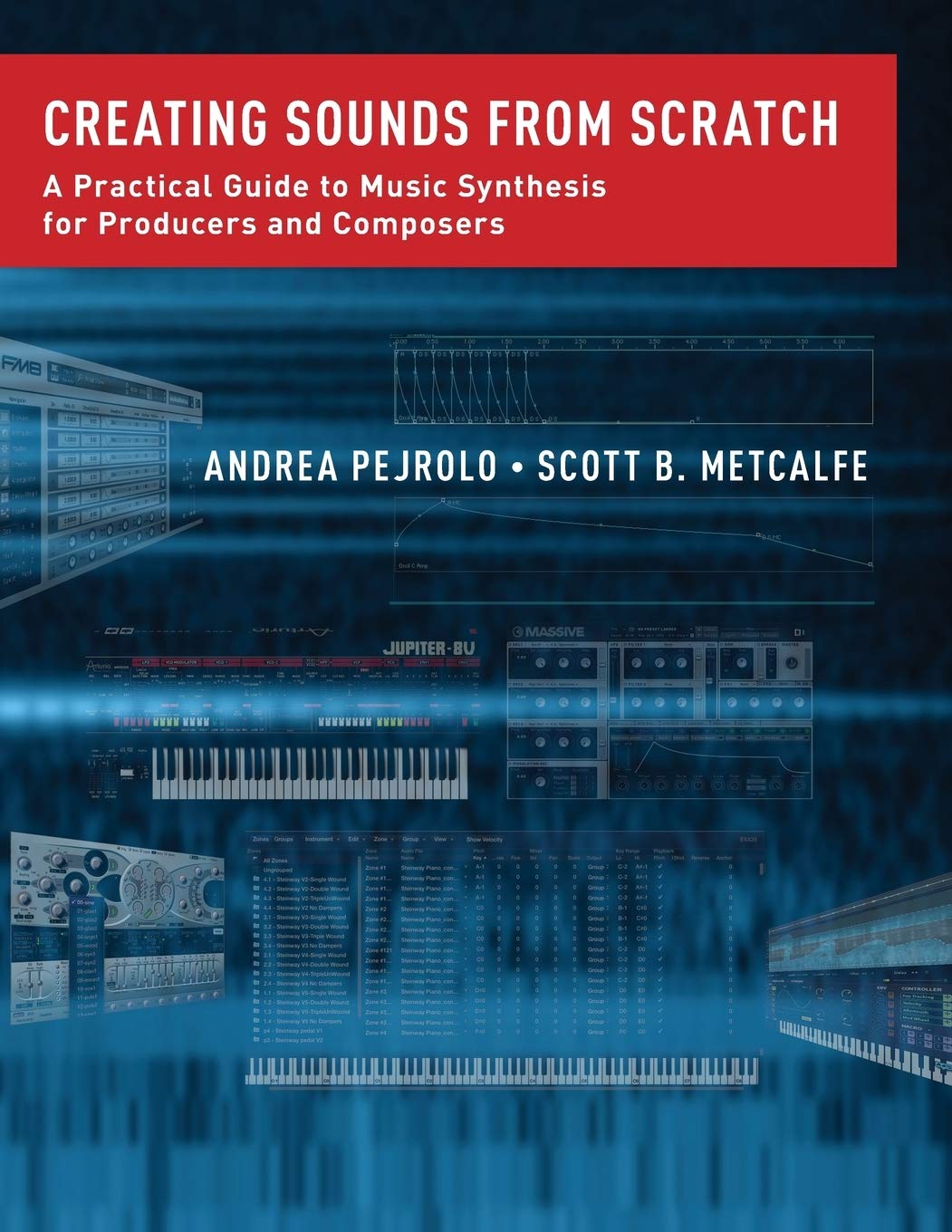
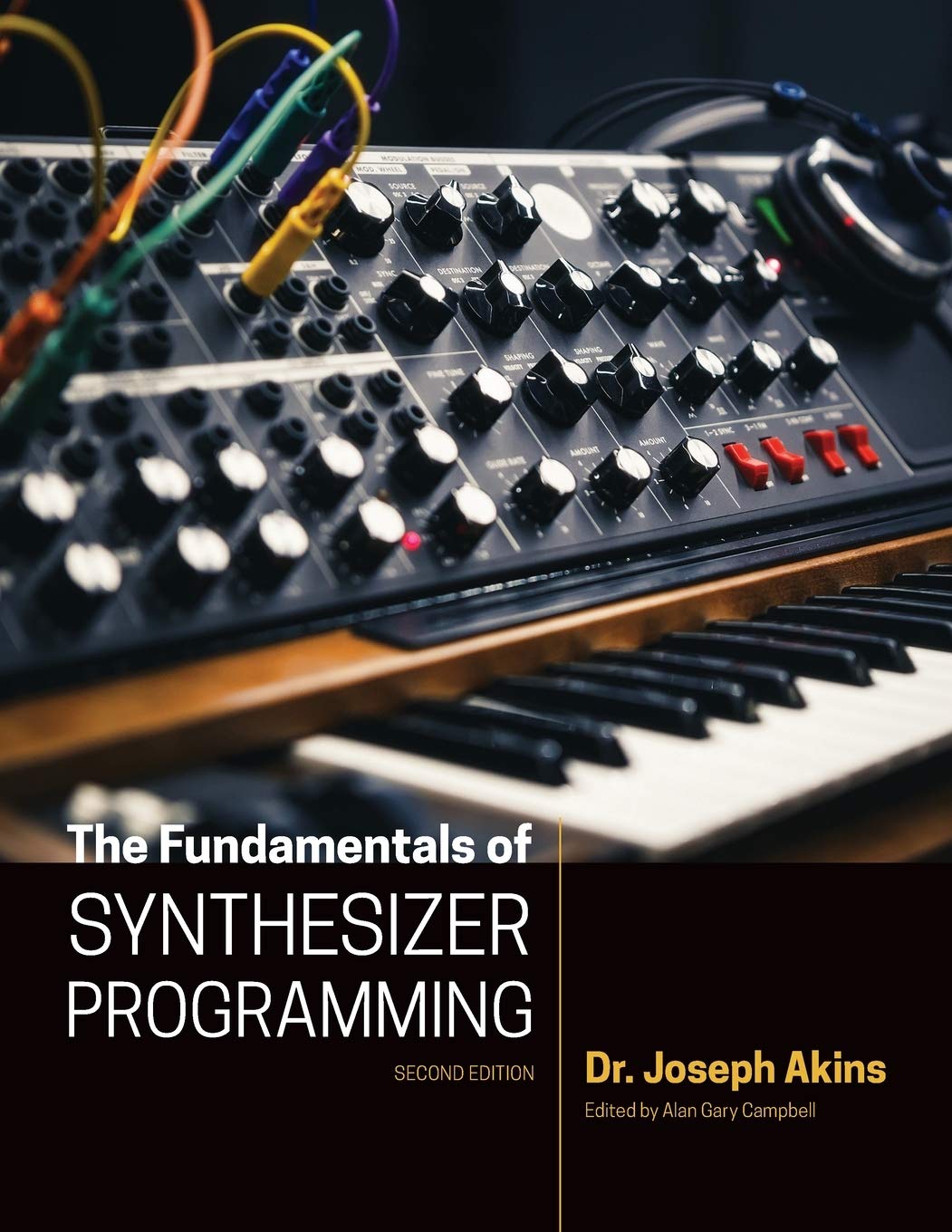

© Matrixsynth - All posts are presented here for informative, historical and educative purposes as applicable within fair use.
MATRIXSYNTH is supported by affiliate links that use cookies to track clickthroughs and sales. See the privacy policy for details.
MATRIXSYNTH - EVERYTHING SYNTH













© Matrixsynth - All posts are presented here for informative, historical and educative purposes as applicable within fair use.
MATRIXSYNTH is supported by affiliate links that use cookies to track clickthroughs and sales. See the privacy policy for details.
MATRIXSYNTH - EVERYTHING SYNTH


























